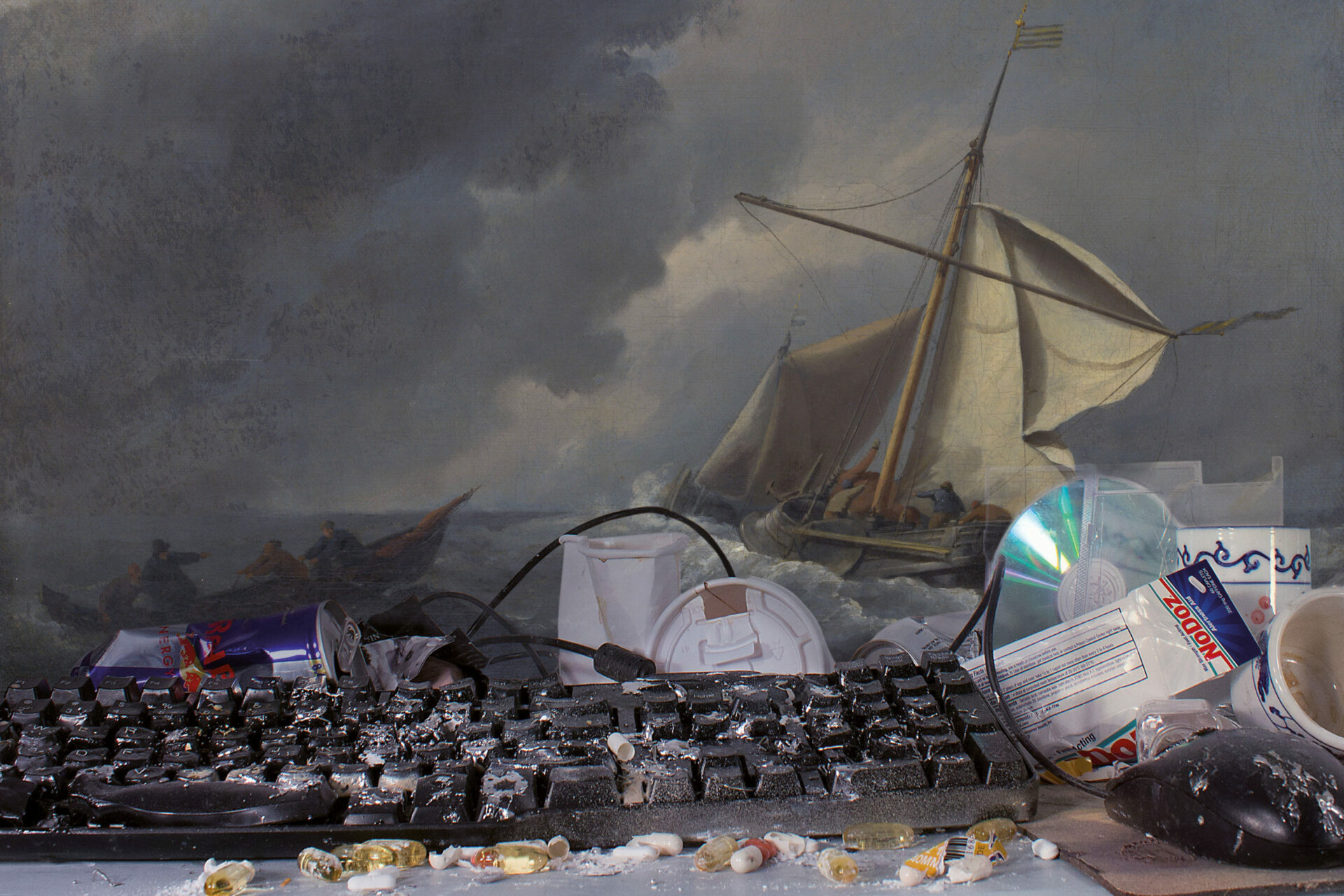
Photo : courtesy of the artist
Jon Rafman
A multitude of purpose-built, individual screening boxes occupy the show, built out of urethane foam and other construction supplies. The tiny enclosures constrain the viewer’s body, adding to the presentation context of Rafman’s video edits and animations. In this manner Kool-Aid Man in Second Life (2008 – 2011) invites us into a tempered glass cube, to follow the sickly-sweet juice icon through his equally synthetic onscreen world. The latter shows a compendium of extraordinary scenes of cities and wilderness, promoting an exacerbated artificiality that only reminds us of the constructed essence of this and other networks. Rafman implied this constructedness in a 2010 interview with Nicolas O’Brien, when calling the multi-user domain Second Life “the ultimate tourist destination — an endless expanse of floating symbols, free of the weight of history.”2 2 - From “A Conversation with Jon Rafman,” Vimeo video, 13:03, posted by Badatsports, 2010, accessed July 7, 2015 https://vimeo.com/11685295. Accordingly, some of Rafman’s screening pods offer a bodily experience more analogous to the content on view, such as Oh The Humanity (waterbed) (2015) — a pimped up waterbed for viewers to wobble upon while lying under the looping animation of an overcrowded wave pool. In other instances, the angular furniture of Betamale/Mainsqueeze (Pit Couch) (2015) and square-columned agora of Remember Carthage/A Man Digging (2015) mimic the low-polygon count and electric colours of early 3D engines, all of the above suggesting that virtual worlds have already colonized our social existence.




